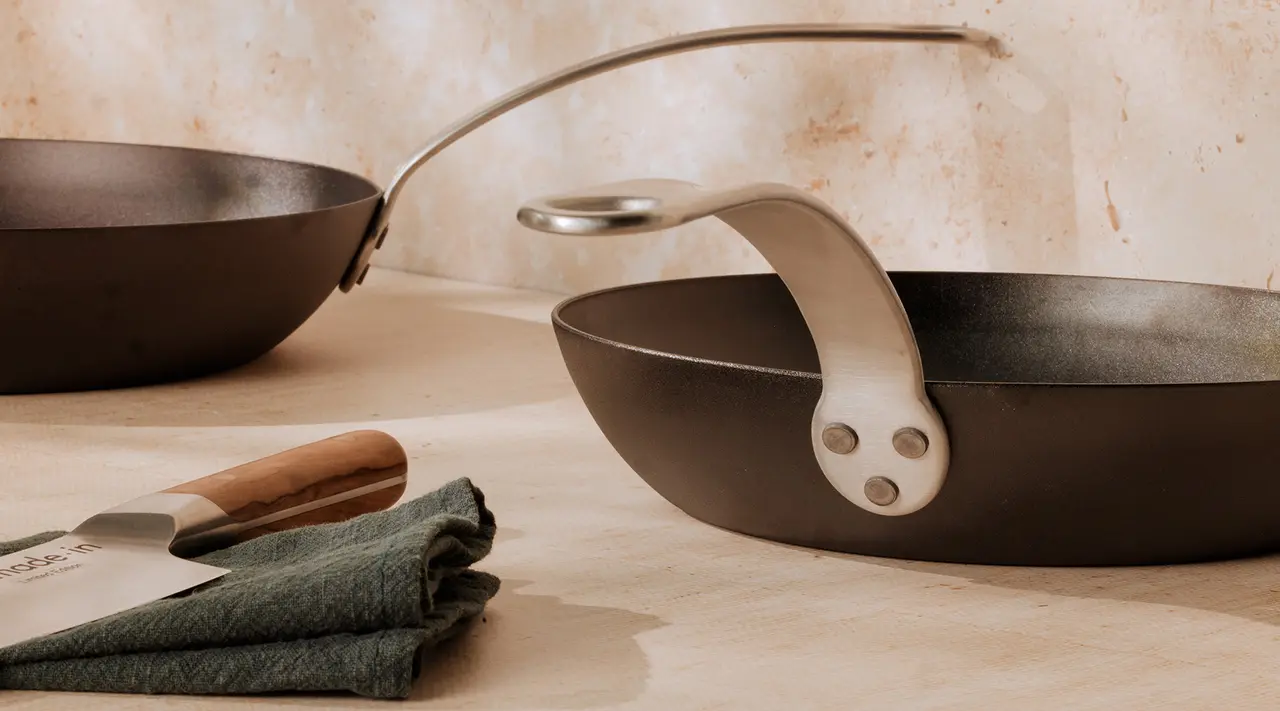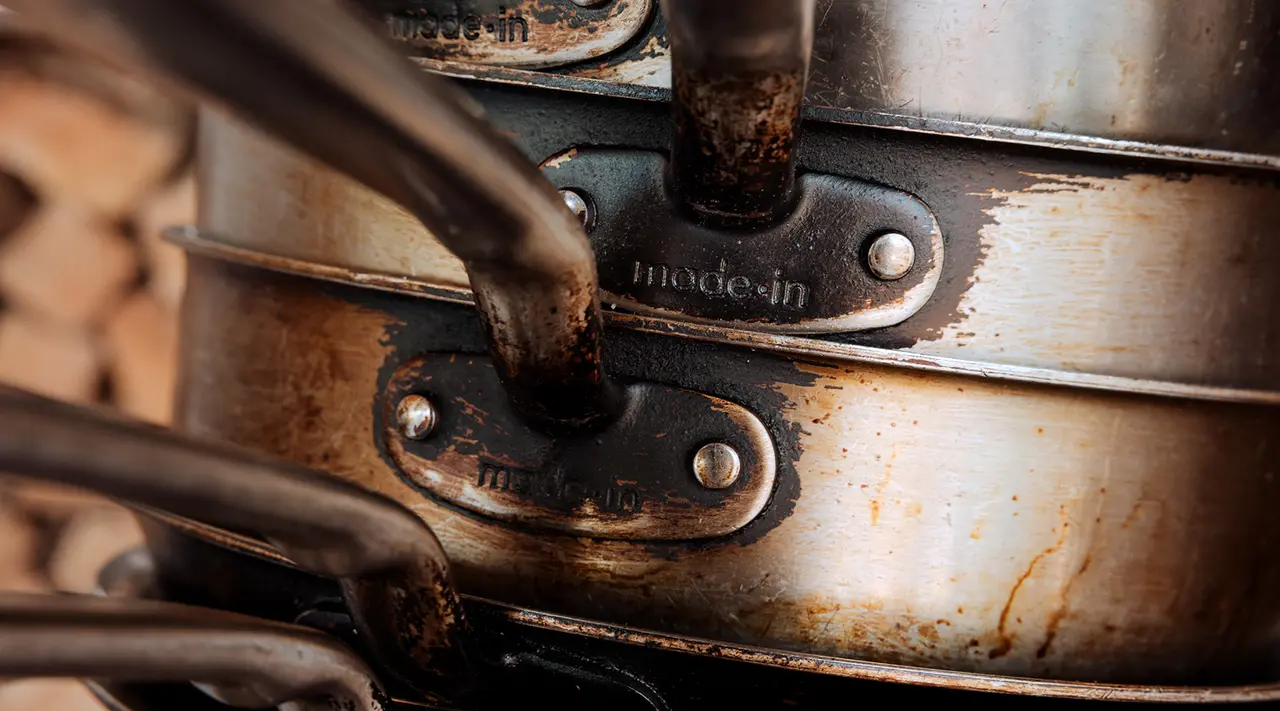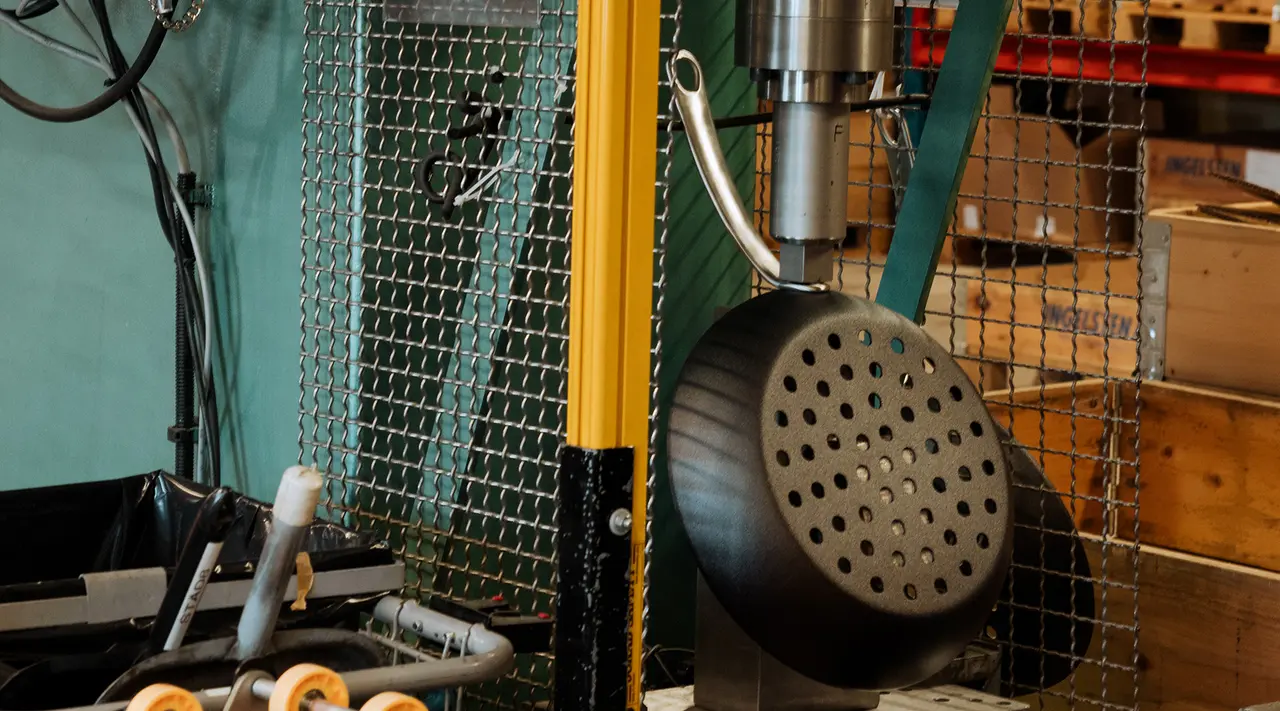Handles can make or break a piece of cookware. No matter how durable-looking a pan might seem, it’s pretty much useless if the handle breaks off or bends while you’re using it—both of which can happen if the handle is poorly riveted or welded.
And while our premium riveting process ensures that each handle is securely fixed to the base of the pan, that’s not always a guarantee with other cookware brands. Here’s how rivets work to make your pots and pans more secure—and why they’re the better option than welded ones.
Understanding Riveted Handles

From the outside, rivets look like metal screws or bolts used to attach a handle to the base of a pan. Yet unlike screws, rivets are affixed to a pan or other piece of metal by inserting them into a pre-made hole, and then using a rivet gun to deform the end of the rivet so that it stays in place.
In our cookware, we utilize industrial-strength stainless steel rivets—two on each piece of Stainless Clad and Non Stick cookware, and three on our Carbon Steel—to ensure that each handle stays attached for a lifetime (or longer).
Advantages of Riveted Handles
Riveted handles are widely preferred by serious home and professional chefs—here are just a few reasons why.
- The riveting process makes handles that are incredibly strong and durable, ensuring your cookware will hold up to years of heavy use
- You’ll never have to worry about your riveted handle breaking off in the middle of cooking, which can be a serious safety risk (not to mention a huge bummer).
Considerations of Riveted Handles
- One common complaint when it comes to riveted cookware is that food, grease, and grime collects more easily than in welded ones. However, this is easily prevented by cleaning your pan after each use to prevent buildup—especially
- Some cheaper-quality riveted pans may need occasional tightening—something we haven’t found to be necessary when cooking with our pans due to our premium riveting process.
Welded Handles
As the name implies, welded handles are made by heating two pieces of metal—the pan and the handle itself—and joining them together, with no screws or rivets needed.
Advantages of Welded Handles
- Welded handles feature a cleaner, more seamless-looking design due to a lack of rivets or screws.
- Their smooth surface makes welded handles easier to clean than riveted or screwed-on handles.
Disadvantages of Welded Handles
- Many popular cookware brands (like the ones you might see advertised on Instagram) feature poorly welded-on handles, which typically have weak spots that will further diminish over time and with use.
- Welded handles don’t hold up as well as riveted ones under constant stress, which is something to keep in mind if you use your pans very frequently.
Riveted vs. Welded Handles: How Do They Compare?

The difference isn’t just aesthetic.
Durability and Strength
Plain and simple, riveted handles last longer and hold up better to heavy use than welded handles. While a welded handle might work fine if it’s only used lightly or occasionally, it can easily bend or break off in a high-stress cooking environment, such as a restaurant kitchen, which is less than ideal, to say the least.
Maintenance and Care
Riveted handles are only slightly higher-maintenance than welded handles when it comes to cleaning. A quick wipe-down after each use—paying particular attention to the areas in/around the rivets—can help keep residue from building up, which is the most common complaint regarding the care of cookware with riveted handles.
Aesthetic and Design
Some cooks prefer the smooth, sleek look of welded handles, though a well-designed riveted handle can look just as chic .
Ready to Shop?
Riveted handles aren’t just a design choice: they make your pans stronger, sturdier and better equipped to handle years of heavy use. Using our premium riveting process—combined with professional-grade materials like 5-Ply Stainless Clad and Carbon Steel—we made every handle as tough and reliable as the cookware itself.






























